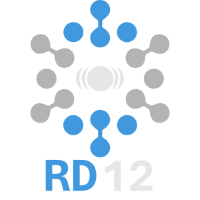Speaker
Description
Protein kinases are a large family of enzymes that regulate diverse cellular processes by transfering phosphate groups from ATP to their protein substrates. The enzymatic kinase domain (KD) represents a conserved fold, and KD phosphorylation, as well as interactions with cis-regulatory elements and other allosteric effectors, modulates the populations of catalytically active and inactive states present in the KD conformational ensemble. In this presentation, I will briefly describe two studies where multi-temperature X-ray crystallography has provided new insight into the conformational landscapes of two human kinases. In one study, we used determined crystal structures of CDK2, a kinase that regulates the cell cycle and is considered a „white whale“ of drug discovery, across a broad range of temperatures from cryogenic to physiological, to identify inactive conformations that could be targeted to create more selective inhibitors that avoid off-target effects. In the other study, we determined crystal structures of CLK1 across a narrow range of physiological temperatures to understand how this kinase acts as an acute body temperature sensor. Because these studies involve extensive data collection at non-cryogenic temperatures, careful consideration must be given to mitigating the effects of radiation damage.

